In this edition:
* Firefly Aerospace’s Alpha “Noise of Summer” Mission Rescheduled
* Curium One Satellite Set to Test SatNOGS-COMMS Transceiver
* SpaceX Falcon Heavy Successfully Launches GOES-U Satellite
* GridMasterMap Satellite Top 100 Rovers July 2024 Rankings
* Changes to AMSAT-NA TLE Distribution for June 28, 2024
* ARISS News
* Upcoming Satellite Operations
* AMSAT Ambassador Activities
* Satellite Shorts From All Over
The AMSAT News Service bulletins are a free, weekly news and information service of AMSAT, the Radio Amateur Satellite Corporation. ANS publishes news related to Amateur Radio in Space including reports on the activities of a worldwide group of Amateur Radio operators who share an active interest in designing, building, launching and communicating through analog and digital Amateur Radio satellites.
The news feed on https://www.amsat.org publishes news of Amateur Radio in Space as soon as our volunteers can post it.
Please send any amateur satellite news or reports to: ans-editor [at] amsat.org
You can sign up for free e-mail delivery of the AMSAT News Service Bulletins via the ANS List; to join this list see: https://mailman.amsat.org/postorius/lists/ans.amsat.org/
ANS-182 AMSAT News Service Weekly Bulletins
To: All RADIO AMATEURS
From: Radio Amateur Satellite Corporation
712 H Street NE, Suite 1653
Washington, DC 20002
DATE 2024 Jun 30
Firefly Aerospace’s Alpha “Noise of Summer” Mission Rescheduled
Firefly Aerospace’s Alpha rocket, originally scheduled for launch on June 27th, has been rescheduled to 9:03 pm PDT on July 1st for its #FLTA005 mission titled “Noise of Summer.” This launch will occur from Space Launch Complex-2 at Vandenberg Space Force Base in California, carrying NASA payloads and involving a dedicated launch team. For updates closer to the launch window, visit Firefly Aerospace’s official website at https://fireflyspace.com/news/.
A highlight of this launch is the ELaNa 43 mission, featuring the deployment of multiple CubeSats, including the University of Maine’s MESAT1. This satellite, equipped with a Linear Transponder Module (LTM) from AMSAT, will help conduct experiments designed by Maine schools, contributing to educational and research objectives supported by NASA.
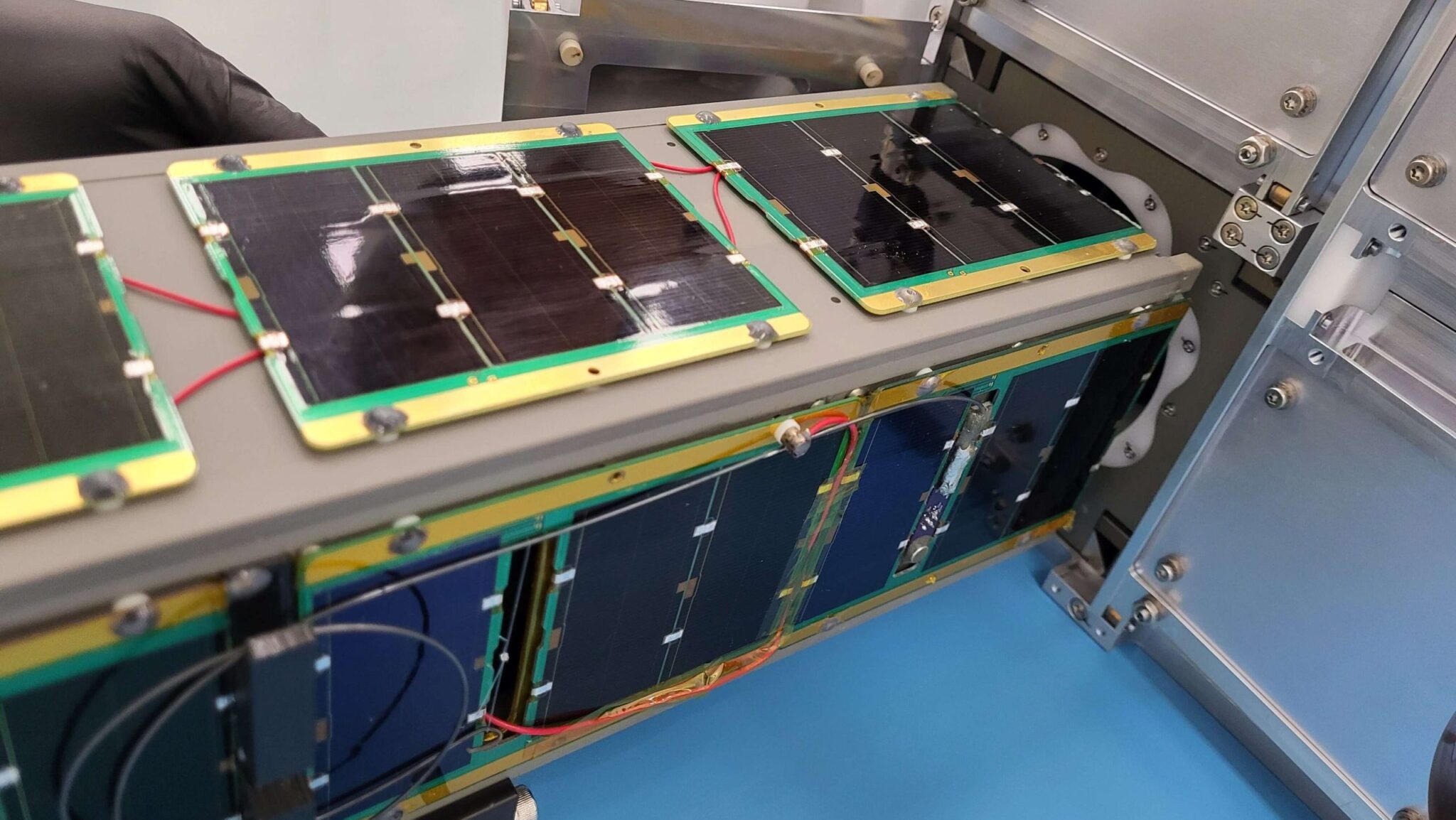
MESAT1, beyond its primary mission objectives, will study local temperatures and phytoplankton concentrations using onboard sensors and imaging equipment. It also features a linear transponder for amateur radio use, with telemetry accessible through AMSAT’s FoxTelem program, allowing enthusiasts to decode and analyze satellite data. Users can download the latest version of FoxTelem from the AMSAT website (https://www.amsat.org/foxtelem-software-for-windows-mac-linux/) to decode and forward telemetry results to AMSAT’s central server for further analysis by engineers and students.
Educational experiments aboard MESAT1, such as ALBEDO, IMAGER, and HAB, developed by Maine schools, aim to study light reflection, coastal water turbidity, and early detection of harmful algal blooms, respectively. These projects highlight the collaborative effort between educational institutions and space agencies to promote scientific learning and environmental awareness.
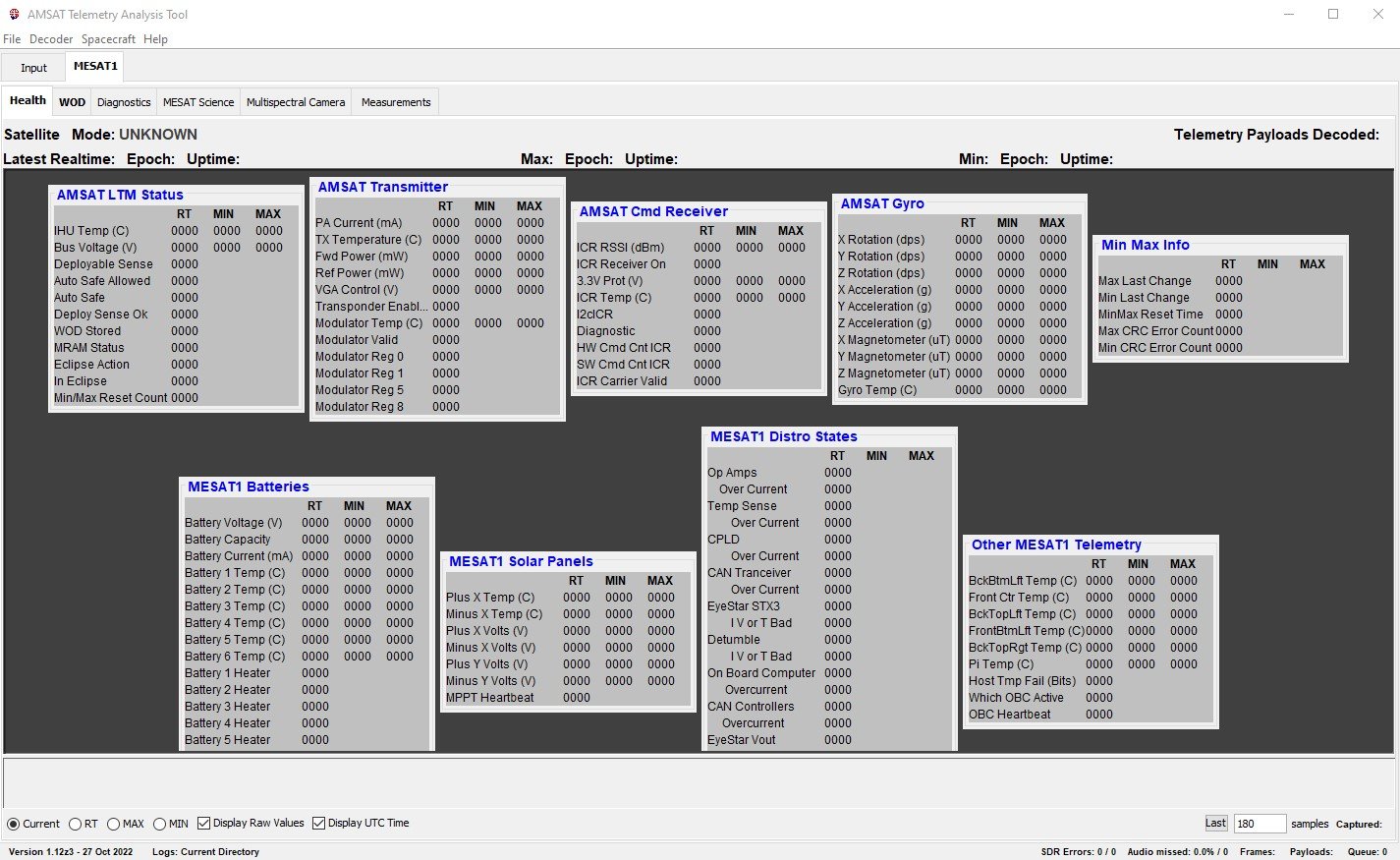
AMSAT’s involvement in the mission underscores its role in advancing amateur radio satellite technology and promoting international cooperation in space science. Through initiatives like FoxTelem, AMSAT enables public engagement with satellite telemetry, thereby enhancing participation in space exploration and scientific discovery.
[ANS thanks Firefly Aerospace, University of Maine, and AMSAT for the above information]
Curium One Satellite Set to Test SatNOGS-COMMS Transceiver
The upcoming launch of the Ariane 6 rocket will carry the Curium One satellite, a 12-unit CubeSat developed collaboratively by Planetary Transportation Systems and the Libre Space Foundation. A primary focus of this mission is the in-orbit testing of the SatNOGS-COMMS transceiver, an open-source radio designed to enhance satellite communication capabilities. This mission aims to validate the performance of the SatNOGS-COMMS transceiver, a dual-band, software-configurable radio transceiver specifically created for Telemetry and Telecommand (TMTC).
The SatNOGS-COMMS transceiver is notable for its dual-band operation in the UHF and SHF bands. It can accommodate a turnstile antenna, which facilitates both transmitting and receiving radio signals. The transceiver’s software-configurable nature allows for in-flight adjustments to carrier and intermediate frequencies, bitrate, modulation options, and channel-filter bandwidth, making it highly versatile for various experimental and educational setups. This flexibility is expected to be a significant asset in the mission’s success.
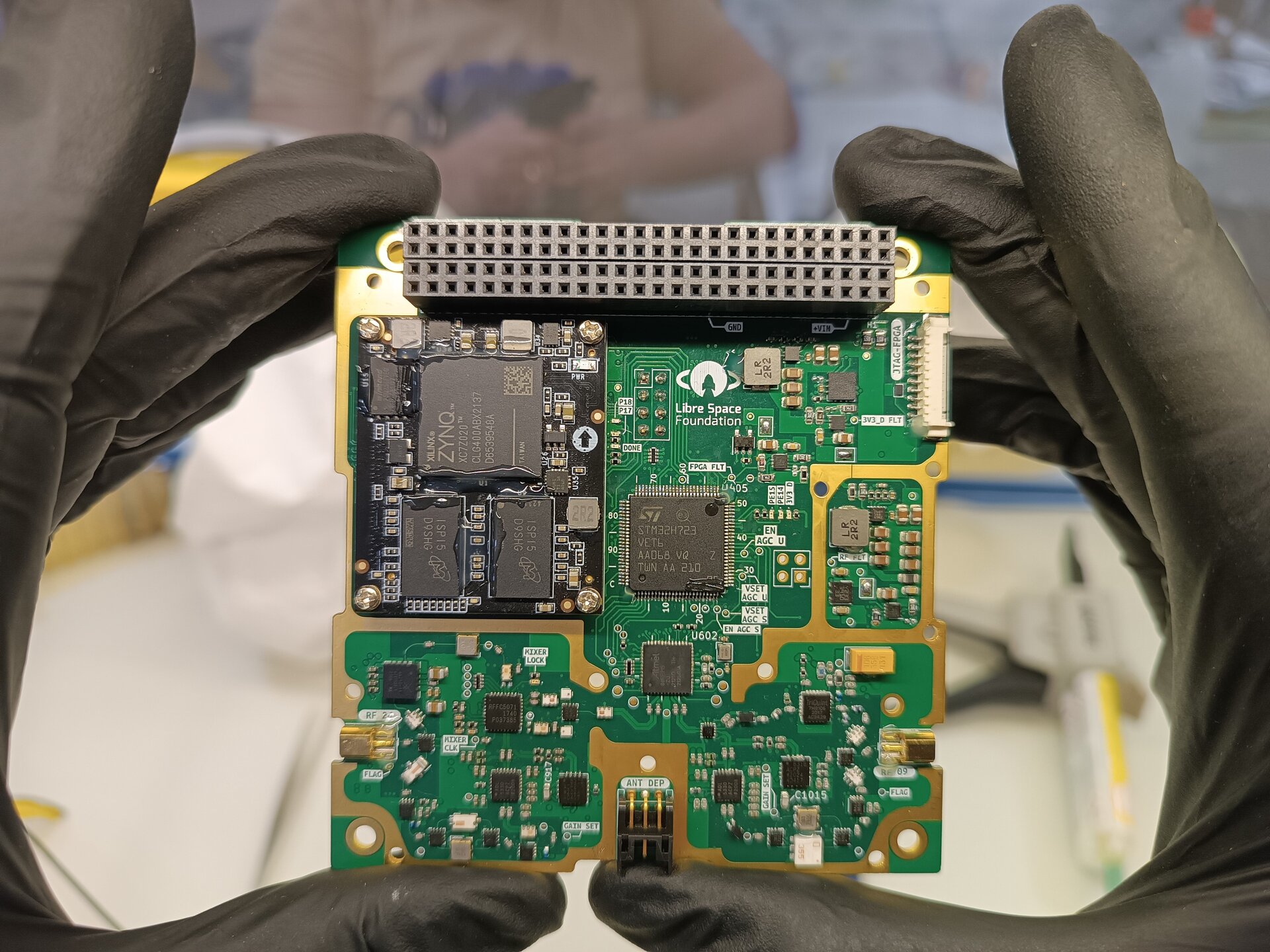
One of the standout features of the SatNOGS-COMMS transceiver is its open-source nature. By making the hardware and software publicly available, the Libre Space Foundation aims to foster a collaborative environment where amateur radio operators, students, and space enthusiasts can contribute to and benefit from the technology. This approach not only democratizes access to advanced space communication technology but also accelerates innovation and learning within the community. This mission could set a precedent for future open-source space technologies. The GitLab repository for the SatNOGS-COMMS transceiver can be found at https://gitlab.com/librespacefoundation/satnogs-comms.
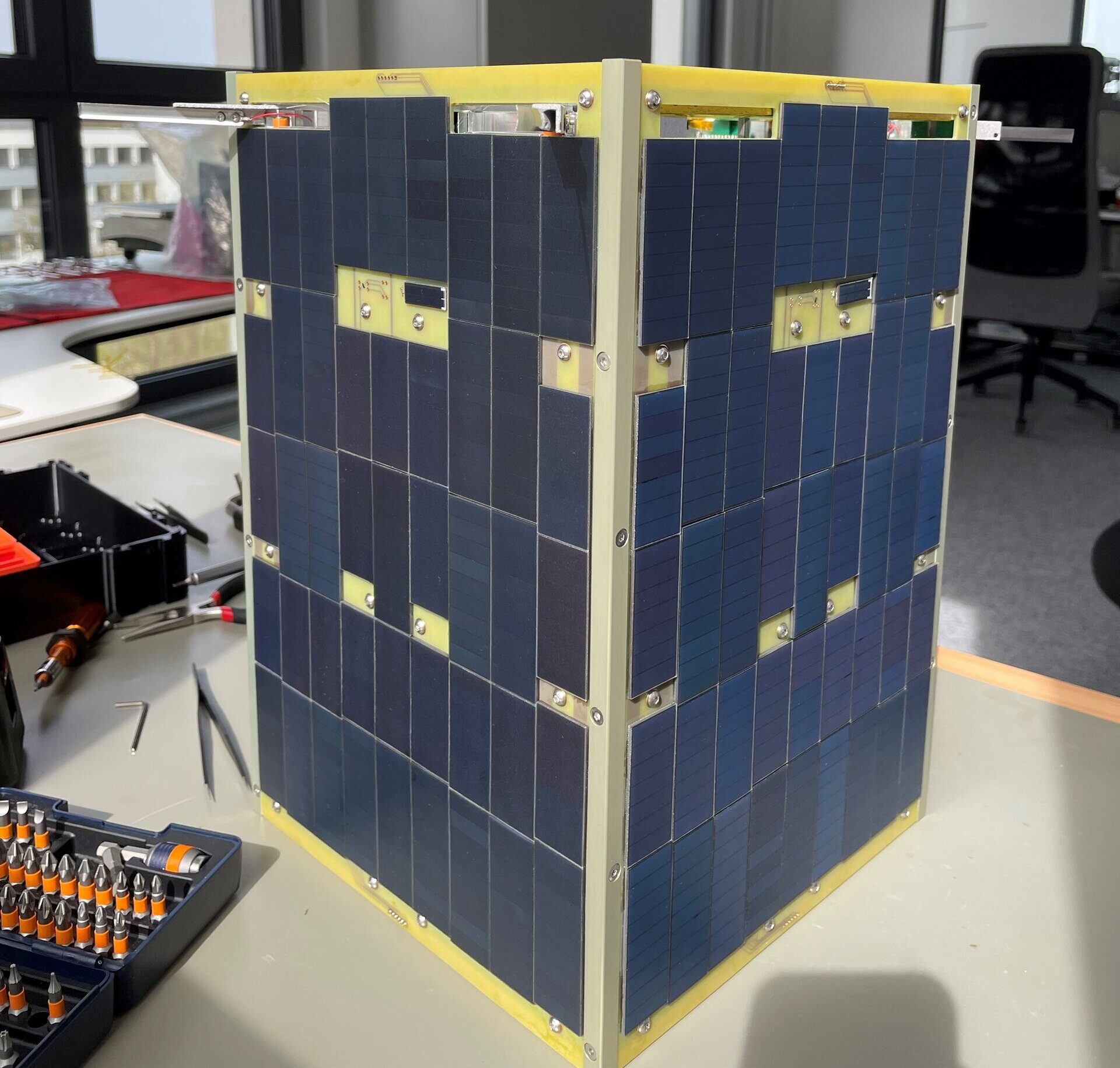
Curium One’s mission highlights the potential of open-source satellite technology. By promoting amateur radio and providing educational opportunities in space technology, this mission aims to make space more accessible and affordable for everyone. The data and insights from testing the SatNOGS-COMMS transceiver will support more inclusive and innovative uses of space, setting a new standard for collaborative space missions. This mission shows the impact of collaboration and open-source innovation in advancing space exploration and technology.
[ANS thanks the European Space Agency Libre Space Foundation for the above information]
The 2024 AMSAT President’s Club coins are here now!
Help Support GOLF and Fox Plus
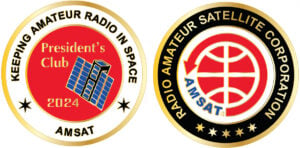 Join the AMSAT President’s Club today and help
Join the AMSAT President’s Club today and help
Keep Amateur Radio in Space!
https://www.amsat.org/join-the-amsat-presidents-club/
SpaceX Falcon Heavy Successfully Launches GOES-U Satellite
On June 25, a SpaceX Falcon Heavy rocket successfully lifted off from Kennedy Space Center’s Launch Complex 39A at 5:26 p.m. Eastern, carrying the GOES-U weather satellite, the final spacecraft in a series of geostationary weather satellites. This launch featured several notable firsts, overcoming previous weather forecasts that had predicted only a 30% chance of favorable conditions.
The GOES-U satellite, successfully deployed from the Falcon Heavy’s second stage four and a half hours after liftoff, after the stage completed a sequence of three burns to place the satellite into a geostationary transfer orbit. Built by Lockheed Martin for the National Oceanic and Atmospheric Administration (NOAA), GOES-U will be renamed GOES-19 upon reaching geostationary orbit. After on-orbit commissioning, it will be positioned at 75 degrees east in geostationary orbit, taking over from GOES-16 as the operational GOES-East satellite.
GOES-U carries a suite of earth and space science instruments similar to its predecessors but includes the new Compact Coronagraph (CCOR) instrument for solar observation. CCOR will monitor the solar corona for flares and coronal mass ejections, a crucial function for understanding space weather. This role was previously filled by the nearly 30-year-old Solar and Heliospheric Observatory spacecraft.
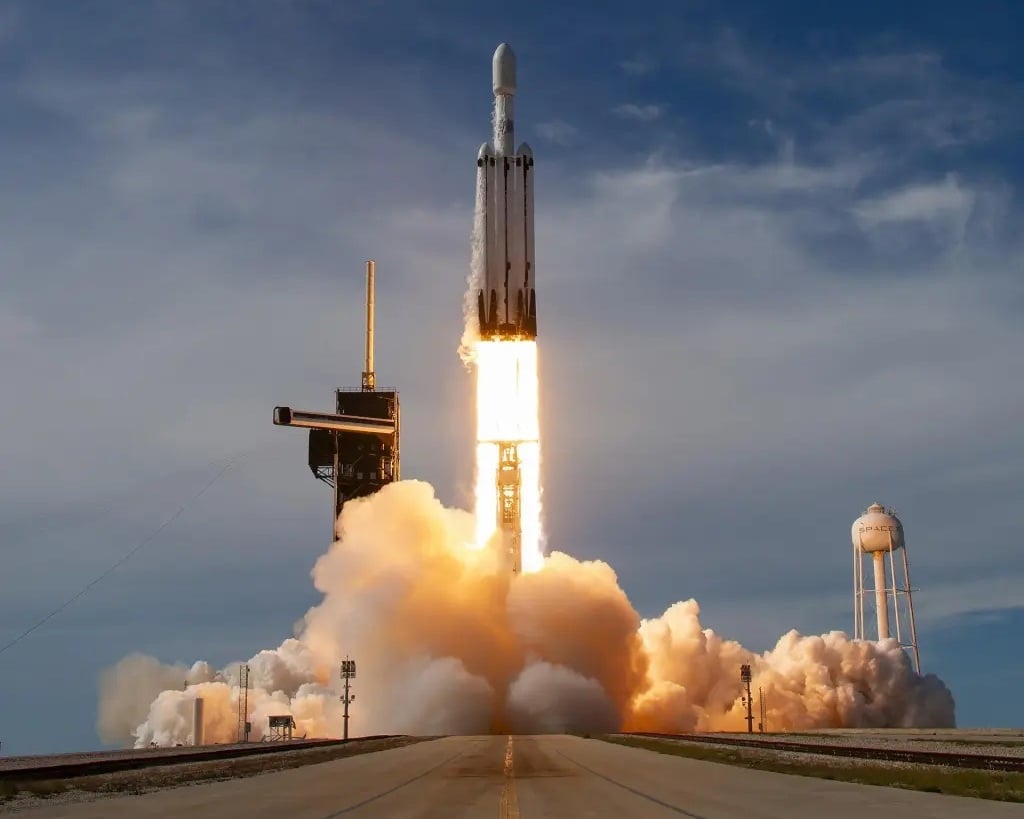
Among the enhancements in the GOES-R series is a lightning mapper. Pam Sullivan, director of the GOES-R program at NOAA, highlighted its impact, saying it allows meteorologists to better understand storm severity and issue more accurate warnings. “The main thing I hear from forecasters is that they have more confidence in a forecast,” she noted.
NOAA is already planning the next generation of geostationary weather satellites, called GeoXO, set to begin launching in 2032. Contracts have been awarded to Lockheed Martin for satellite construction and BAE Systems for sounder and ocean color instruments. Steve Volz, assistant administrator of NOAA’s Satellite and Information Service, described GOES-U as “the bridge that connects today’s geostationary satellite technology with the technology of tomorrow.”
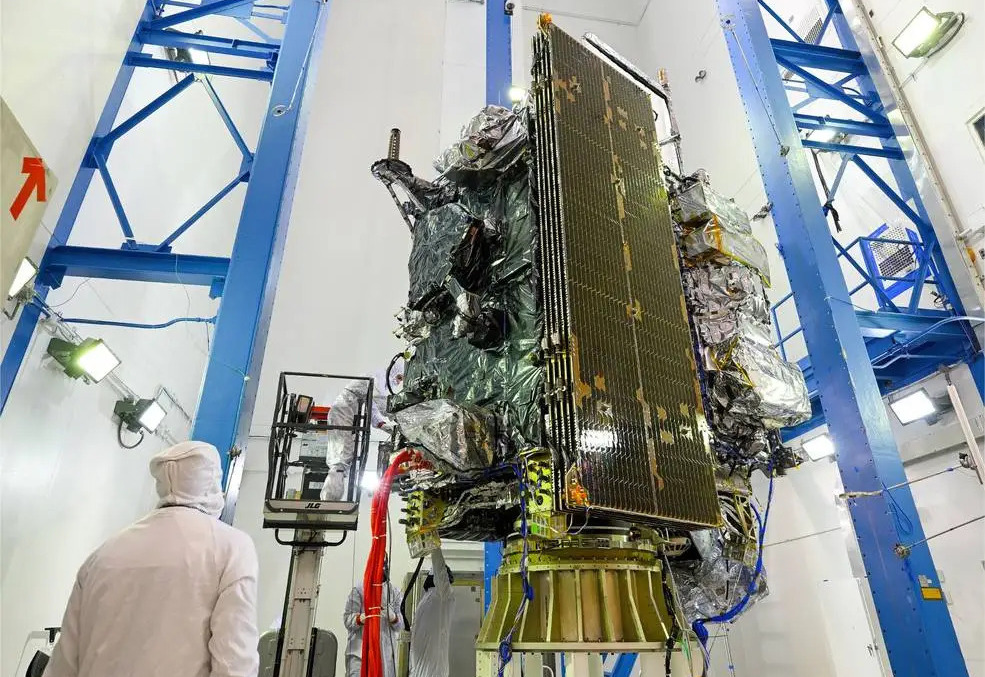
The Falcon Heavy’s additional performance is a key advantage. Julianna Scheiman, director of NASA science missions at SpaceX, explained that the rocket’s capability allows for a significant delta V reduction, meaning the spacecraft requires less energy to reach its final orbit. This efficiency translates into fuel savings and extended operational life for GOES-U, which has a design specification of 15 years. “With the added capability Falcon Heavy is giving us, we expect to be at 20-plus years of fuel life,” said NOAA’s Sullivan.
The GOES-U launch marked the 10th overall for the Falcon Heavy and the second contracted by NASA, following the Psyche asteroid mission in October 2023. Another Falcon Heavy is set to launch NASA’s Europa Clipper mission this October, continuing SpaceX’s role in advancing space exploration and weather monitoring capabilities.
[ANS thanks Jeff Foust, SpaceNews, for the above information]
GridMasterMap Satellite Top 100 Rovers July 2024 Rankings
The July 2024 rankings for the Top 100 Rovers (Mixed LEO/MEO/GEO) in satellite operations, as determined by @GridMasterMap on Twitter, has been released. The ranking is determined by the number of grids and DXCC entities activated, taking into account only those grids where a minimum number of QSOs logged on the gridmaster.fr website have been validated by a third party. Grid numbers do not directly reflect the exact number of activations. Satellite operators are encouraged to upload their LoTW satellite contacts to https://gridmaster.fr in order to provide more accurate data.
Updated: 2024-06-28
| 1 | ND9M | 26 | LU5ILA | 51 | EA4NF | 76 | FG8OJ |
| 2 | NJ7H | 27 | N5BO | 52 | AA5PK | 77 | DF2ET |
| 3 | JA9KRO | 28 | K8BL | 53 | JL3RNZ | 78 | HB9GWJ |
| 4 | N5UC | 29 | DL2GRC | 54 | SP5XSD | 79 | PT9BM |
| 5 | UT1FG | 30 | KE4AL | 55 | AD7DB | 80 | KI7UXT |
| 6 | OE3SEU | 31 | VE3HLS | 56 | F4DXV | 81 | KJ7NDY |
| 7 | DL6AP | 32 | KB5FHK | 57 | KE9AJ | 82 | YU0W |
| 8 | WI7P | 33 | KI7UNJ | 58 | KI7QEK | 83 | WA9JBQ |
| 9 | DP0POL | 34 | LA9XGA | 59 | PA3GAN | 84 | N4DCW |
| 10 | N6UA | 35 | F4BKV | 60 | XE1ET | 85 | KB2YSI |
| 11 | HA3FOK | 36 | JO2ASQ | 61 | N8RO | 86 | N0TEL |
| 12 | K5ZM | 37 | N7AGF | 62 | KM4LAO | 87 | VE3GOP |
| 13 | N9IP | 38 | XE3DX | 63 | VE1CWJ | 88 | JM1CAX |
| 14 | WY7AA | 39 | K7TAB | 64 | SM3NRY | 89 | CU2ZG |
| 15 | W5PFG | 40 | KE0PBR | 65 | N4UFO | 90 | K0FFY |
| 16 | AK8CW | 41 | KI0KB | 66 | VA3VGR | 91 | KG4AKV |
| 17 | AD0DX | 42 | KE0WPA | 67 | W1AW | 92 | N6UTC |
| 18 | F5VMJ | 43 | PR8KW | 68 | VA7LM | 93 | AF5CC |
| 19 | WD9EWK | 44 | VK5DG | 69 | PT2AP | 94 | VE6WK |
| 20 | AD0HJ | 45 | N6DNM | 70 | M1DDD | 95 | W8MTB |
| 21 | DJ8MS | 46 | EB1AO | 71 | DL4EA | 96 | VE7PTN |
| 22 | ON4AUC | 47 | AC0RA | 72 | LU4JVE | 97 | K6VHF |
| 23 | KX9X | 48 | JK2XXK | 73 | W8LR | 98 | DK9JC |
| 24 | ND0C | 49 | W7WGC | 74 | AA8CH | 99 | PT9ST |
| 25 | KG5CCI | 50 | N4AKV | 75 | VE1VOX | 100 | VO2AC |
[ANS thanks @GridMasterMap for the above information]
Need new satellite antennas?
Purchase an M2 LEO-Pack from the AMSAT Store! When you purchase through AMSAT, a portion of the proceeds goes towards
When you purchase through AMSAT, a portion of the proceeds goes towards
Keeping Amateur Radio in Space.
https://amsat.org/product-category/hardware/
Changes to AMSAT-NA TLE Distribution for June 28, 2024
Two Line Elements or TLEs, often referred to as Keplerian elements or keps in the amateur community, are the inputs to the SGP4 standard mathematical model of spacecraft orbits used by most amateur tracking programs. Weekly updates are completely adequate for most amateur satellites. TLE bulletin files are updated daily in the first hour of the UTC day. New bulletin files will be posted immediately after reliable elements become available for new amateur satellites. More information may be found at https://www.amsat.org/keplerian-elements-resources/.
This week there are no additions or deletions to the AMSAT TLE distribution.
[ANS thanks AMSAT Orbital Elements page for the above information]
ARISS NEWS
Amateurs and others around the world may listen in on contacts between amateurs operating in schools and allowing students to interact with astronauts and cosmonauts aboard the International Space Station. The downlink frequency on which to listen is 145.800 MHz worldwide.
+ Recently Completed Contacts
Complejo Educativo Nuestra Señora de Fátima N° 1139 and N° 8119, Pérez, Argentina, Telebridge via VK6MJ
The ISS callsign was NA1SS
The scheduled crewmember was Jeanette Epps KF5QNU
The ARISS mentor was VE6JBJ
Contact was successful Thu 2024-06-27 13:38:07 UTC
+ Upcoming Contacts
Moroccan School of Engineering Sciences, Casablanca, Morocco, telebridge via VK6MJ
The ISS callsign is presently scheduled to be NA1SS
The scheduled crewmember is Jeanette Epps KF5QNU
The ARISS mentor is IN3GHZ
Contact is go for: Mon 2024-07-01 12:02:01 UTC
St. Luke’s College, Buenos Aires, Argentina, direct via LU4AA
The ISS callsign is presently scheduled to be NA1SS
The scheduled crewmember is Mike Barratt KD5MIJ
The ARISS mentor is VE6JBJ
Contact is go for: Wed 2024-07-03 14:42:53 UTC
Watch for Livestreaming via their Instagram accounts: The school: @stlukes.college / Radio Club Argentino: @rca_sociedad_nacional
The crossband repeater continues to be active (145.990 MHz up {PL 67} & 437.800 MHz down). If any crewmember is so inclined, all they have to do is pick up the microphone, raise the volume up, and talk on the crossband repeater. So give a listen, you just never know.
The packet system is also active (145.825 MHz up & down).
As always, if there is an EVA, a docking, or an undocking; the ARISS radios are turned off as part of the safety protocol.
Note, all times are approximate. It is recommended that you do your own orbital prediction or start listening about 10 minutes before the listed time.
The latest information on the operation mode can be found at https://www.ariss.org/current-status-of-iss-stations.html
The latest list of frequencies in use can be found at https://www.ariss.org/contact-the-iss.html
[ANS thanks Charlie Sufana, AJ9N, one of the ARISS operation team mentors for the above information]
Upcoming Satellite Operations
From Randy, ND0C: From 24 June thru 7 July, we will be on another family camping vacation, which means another satellite roving expedition! This time, thru WI to MI and back thru IL and IA. No super rare grids but several that may be needed by many. The grids and passes will depend on where/when we happen to be while on the road or camping. This will be all LEO sats: FM & SSB. As always, I will try for EU passes on RS-44 when possible. Looking forward to pushing past the 100 grids-roved milestone.
From Mike, N8MR: I will be in EN57, with roves to EN67 from Friday, June 28 thru Saturday, July 6. Using an Icom 9700, Arrow and Alaskan antennas. Listening for Europe on linear eastern passes. I can rove to EN56, only if needed. Posting passes to hams.at a day in advance. All QSOs to LoTW as N8MR.
VP5/AA5UK will be QRV from FL31 from 23rd June through 5th July. This operation will be holiday style but will cover HF/LEO/MEO. Head over to his VP5/AA5UK QRZ page for all the info you can shake a stick at.
A growing number of satellite rovers are currently engaged in sharing their grid square activations on https://hams.at. By visiting the website, you gain easy access to comprehensive information about the operators responsible for activating specific grid squares. Additionally, you have the ability to assess the match score between yourself and a particular rover for a given pass, while also being able to identify the upcoming satellite passes that are accessible from your location.
[ANS thanks Ian Parsons, K5ZM, AMSAT rover page manager, for the above information]
AMSAT Ambassador Activities
AMSAT Ambassadors provide presentations, demonstrate communicating through amateur satellites, and host information tables at club meetings, hamfests, conventions, maker faires, and other events.
“Moon Day” at the Frontiers of Flight Museum – July 20th, 2024
Dallas Love Field Airport
8008 Herb Kelleher Way
Dallas, TX 75235
https://flightmuseum.com/events/
AMSAT and Amateur Radio satellites will be presented to the general public as part of this annual space themed STEAM event. Volunteers to help at the table space and to do contact demos are welcome. Contact tschuessler [at] amsat.org for more information.
Huntsville Hamfest – August 17th and 18th, 2024
Von Braun Center South Hall
700 Monroe Street SW
Huntsville, AL 35801
https://hamfest.org/
AMSAT Booth and Forum / N8DEU and W4FCL
Northeast HamXpostion – August 22nd thru 25th, 2024
Best Western Royal Plaza Hotel & Trade Center
181 Boston Post Road West
Marlborough, MA 01752
https://hamxposition.org/
Greater Louisville Hamfest – September 7th, 2024
Paroquet Springs Conference Centre
395 Paroquet Springs Drive
Shepherdsville, KY 40165
https://louisvillehamfest.wixsite.com/louisvillehamfest
AMSAT Forum and Information Table / W4FCL
North Star Radio Convention – October 5th, 2024
Hennepin Technical College (North Campus)
9000 Brooklyn Boulevard
Brooklyn Park, MN 55445
https://conv2023.tcfmc.org/
AMSAT Forum and Information Table / KØJM and ADØHJ
Central Kentucky Hamfest – October 5th, 2024
Highlands Baptist Church
2032 Parallel Road
Lexington, KY 40502
https://www.facebook.com/w9khz/
AMSAT and Educational Satellites Forum and Information Table / AI4SR and W4FCL
2024 AMSAT Space Symposium and Annual General Meeting – October 25th thru 27th, 2024
Doubletree by Hilton Tampa Rocky Point Waterfront
3050 N Rocky Point Drive West
Tampa, FL 33607
https://www.amsat.org/
[ANS thanks the AMSAT Events page for the above information]
Want to fly the colors on your own grid expedition?
Get an AMSAT car flag and other neat stuff from our Zazzle store!
25% of the purchase price of each product goes towards Keeping Amateur Radio in Space
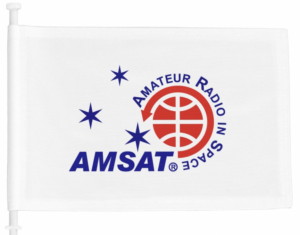 Keeping Amateur Radio in Space
Keeping Amateur Radio in Space
https://www.zazzle.com/amsat_gear
Satellite Shorts From All Over
+ The Ariane 6 rocket recently completed its final ‘wet dress rehearsal’ at Europe’s Spaceport in French Guiana, marking a crucial milestone before its maiden launch. This rehearsal involved loading 180 tons of supercooled propellant into the rocket, cooling its components to cryogenic temperatures, and rolling back the mobile gantry. ESA’s Guy Pilchen highlighted that this rehearsal allowed teams to refine launch operations using the actual flight hardware and software. Following fueling, the rocket underwent final preparations for its upcoming launch, expected to confirm its date after data analysis. With payloads ranging from Earth observation to scientific experiments, Ariane 6 aims to secure Europe’s independent access to space and advance space exploration. (ANS thanks the European Space Agency for the above information)
+ China’s Chang’e 6 probe has returned to Earth on June 25, 2024, with the first-ever samples from the far side of the moon, landing in Inner Mongolia on Tuesday. The successful mission marks a global milestone, with the samples expected to include 2.5 million-year-old volcanic rock that could shed light on the geological differences between the moon’s near and far sides. The probe landed in the moon’s South Pole-Aitken Basin, providing samples from various geological layers. This mission is part of China’s growing space rivalry with the U.S. and other nations, aiming to establish China as a technological power. The journey began on May 3 and lasted 53 days, involving drilling into the core and collecting surface rocks. China plans to share the samples with international scientists, hoping to answer fundamental questions about lunar geology and the solar system’s early days. (ANS thanks Huizhong Wu, Associated Press, for the above information)
+ NASA called off a planned spacewalk on June 24 due to a malfunction in astronaut Tracy Dyson’s spacesuit. Dyson and her crewmate Mike Barratt were preparing to exit the International Space Station to conduct maintenance when a water leak was detected in Dyson’s suit cooling unit. This unit is crucial for maintaining a comfortable temperature during spacewalks. The leak occurred just after the suits were switched to battery power, prompting NASA to abort the mission. Although Dyson reported feeling a bit warm and expressed concerns about potential water damage to electrical connectors, both astronauts were safe throughout the incident. This cancellation follows a similar recent setback on June 13, involving a spacesuit issue, and it raises questions about the potential impact on the return schedule of Boeing’s Starliner capsule. (ANS thanks Jackie Wattles, CNN, for the above information)
+ NASA astronauts Suni Williams and Butch Wilmore, who flew Boeing’s Starliner capsule to the International Space Station (ISS), have had their return to Earth delayed multiple times due to issues with the spacecraft. Originally planned to stay for about a week, their mission has been extended indefinitely as NASA and Boeing investigate a slow helium leak and malfunctioning thrusters discovered after reaching orbit. The latest delay was announced last week, with no new return date set yet. Despite these issues, the astronauts are assisting with tasks and conducting tests on the ISS, where they are accommodated with sufficient supplies. NASA is taking a cautious approach, allowing data to drive decisions about managing the leaks and thruster performance. This mission aims to certify the Starliner for future routine flights, similar to SpaceX’s Crew Dragon service for NASA. (ANS thanks Denise Chow, NBC News, for the above information)
Join AMSAT today at https://launch.amsat.org/
In addition to regular membership, AMSAT offers membership to:
* Societies (a recognized group, clubs or organization).
* Primary and secondary school students are eligible for membership at one-half the standard yearly rate.
* Post-secondary school students enrolled in at least half time status shall be eligible for the student rate for a maximum of 6 post-secondary years in this status.
* Memberships are available for annual and lifetime terms.
Contact info [at] amsat.org for additional membership information.
73 and remember to help Keep Amateur Radio in Space!
This week’s ANS Editor, Mitch Ahrenstorff, ADØHJ
ad0hj [at] amsat.org
